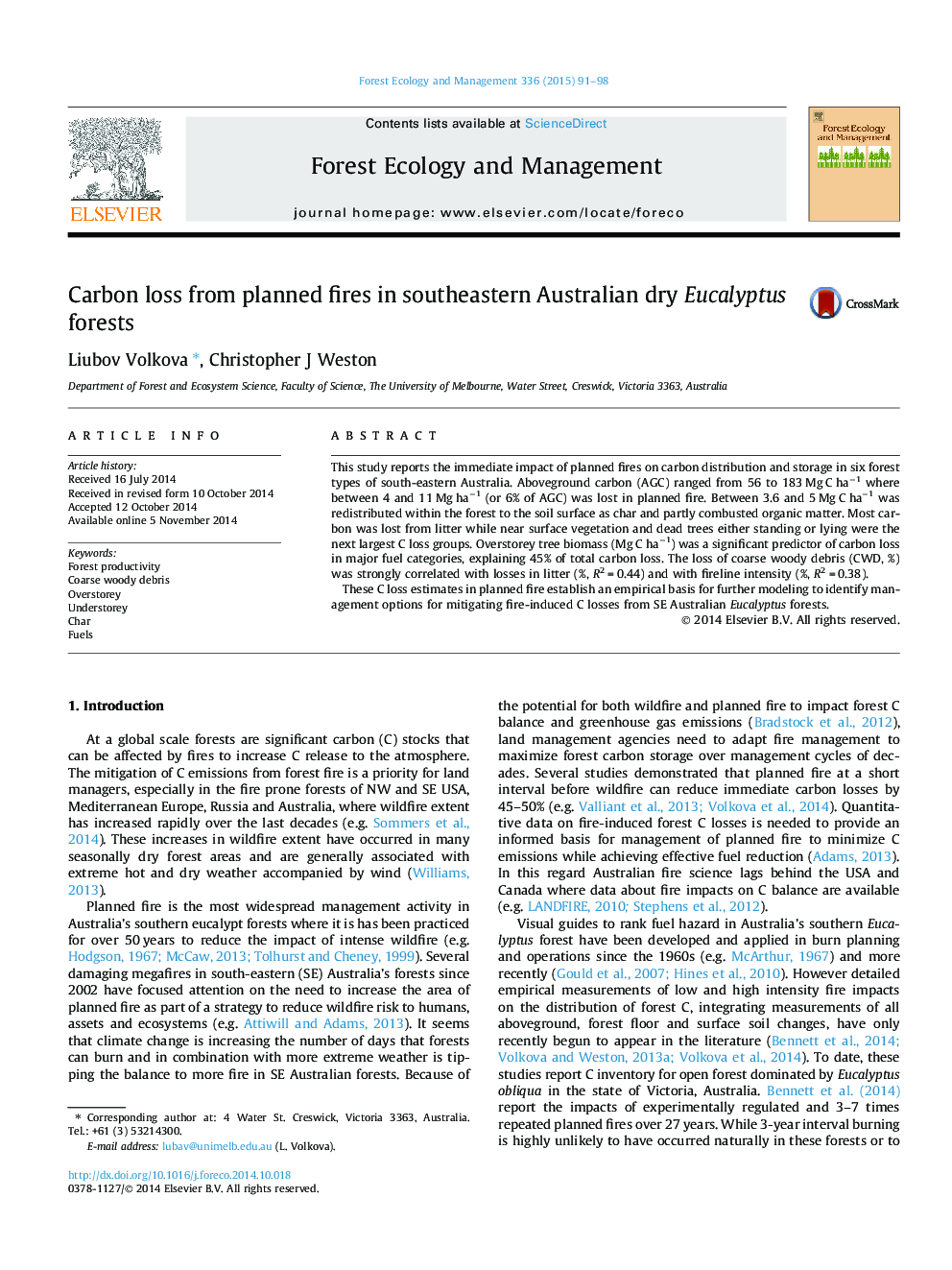| Article ID | Journal | Published Year | Pages | File Type |
|---|---|---|---|---|
| 86420 | Forest Ecology and Management | 2015 | 8 Pages |
•Set limits to C amount in all carbon pools in SE Australian Eucalyptus forests.•Set limits to C loss from each pool in planned fire.•Identifies overstorey biomass as a predictor of total C loss in planned fires.•Identifies higher proportion of forest C emission from lower productivity forests.•Gives implications for management of fire in forests.
This study reports the immediate impact of planned fires on carbon distribution and storage in six forest types of south-eastern Australia. Aboveground carbon (AGC) ranged from 56 to 183 Mg C ha−1 where between 4 and 11 Mg ha−1 (or 6% of AGC) was lost in planned fire. Between 3.6 and 5 Mg C ha−1 was redistributed within the forest to the soil surface as char and partly combusted organic matter. Most carbon was lost from litter while near surface vegetation and dead trees either standing or lying were the next largest C loss groups. Overstorey tree biomass (Mg C ha−1) was a significant predictor of carbon loss in major fuel categories, explaining 45% of total carbon loss. The loss of coarse woody debris (CWD, %) was strongly correlated with losses in litter (%, R2 = 0.44) and with fireline intensity (%, R2 = 0.38).These C loss estimates in planned fire establish an empirical basis for further modeling to identify management options for mitigating fire-induced C losses from SE Australian Eucalyptus forests.
